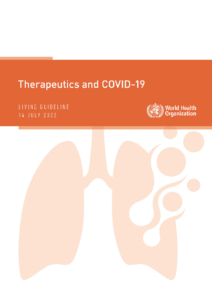
Global Partnership to Make Available 120 Million Affordable, Quality COVID-19 Rapid Tests for Low- and Middle-Income Countries
Rapid tests are a fast and accurate way to diagnose patients in
As in-vitro diagnostic (IVD) tools and technologies are quality-assured and policies are in place, countries are able to make them available for use. For countries to make products available, strong procurement systems and supply chains need to be in place to ensure the right diagnostics are deployed to the right places at the right time. Procurement and supply management systems which include procurement planning, storage, and distribution are critical for countries to safeguard the continuous quality and availability of products.
Without IVD tools and technologies, the spread of the SARS-CoV-2 virus cannot be effectively tracked, patients cannot access the treatments they need, the efficacy of vaccines cannot be assessed, and the emergence of new variants cannot be detected. As IVDs, molecular and antigen-detection rapid diagnostic tests used for diagnosis and screening of SARS-CoV-2, were quality assured and policies set in place, they began to enter the market. However, access to these tools was out of reach from an accessibility and affordability perspective for certain settings. While high-income countries acquired significant volumes of tests, the same tools were not easily accessed by low- and middle-income countries as there was limited availability of tests, and preferred tests by high-income countries were not suitable and or priced too high.
Without the ability to procure, afford, and manage the supply of IVD tools, low- and middle-income countries remain blind to the spread of the SARS-CoV-2 virus as they are unable to test and enact countermeasures or conduct surveillance to monitor emerging variants. To address the procurement and supply management challenges, the ACT-A Diagnostics Pillar partners worked to ensure the availability and supply of accurate and affordable diagnostics.
With the support of partners, the following key activities were prioritized for procurement and supply management efforts:
Procurement and supply management investments for COVID-19 tools and technologies improved equitable and timely access to IVDs. Notable procurement and supply management achievements are highlighted. To learn more about this procurement and supply management, refer to the learnings and resource section below.
tests were procured for 182 countries in need via the ACT-A Dx Pillar Diagnostics Consortium
tests were delivered to 182 countries in need via Diagnostics Consortium
awarded since 2021 by Global Fund via C19RM for procurement of tests across 103 countries
price reduction down to US$ 10 for PCRs and $US 1 – 2 for antigen RDTs
Leveraging the ACT-Accelerator experience, there are key lessons to expand the use of diagnostic tools and technologies for COVID-19 as well as other diseases of endemic and pandemic potential.

Rapid tests are a fast and accurate way to diagnose patients in

WHO’s health products policy and standards team supports countries to formulate evidence-based
© All Rights Reserved 2023
The ACT-A Dx Knowledge Hub is hosted by FIND on behalf of the ACT-Accelerator Diagnostics Pillar partnership.